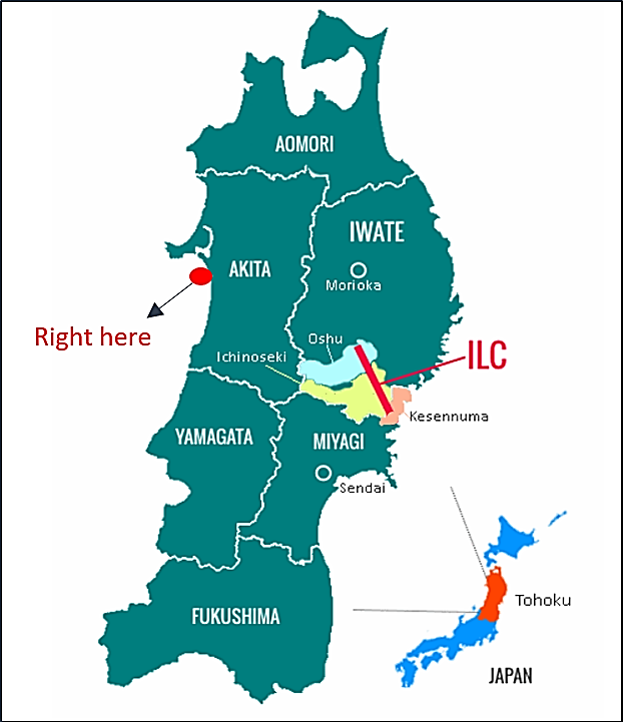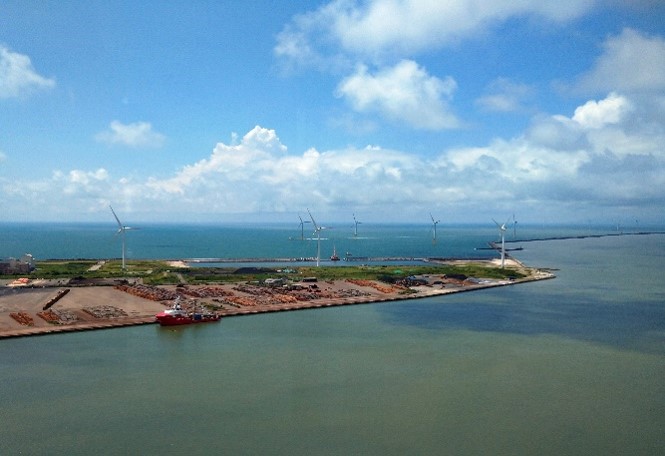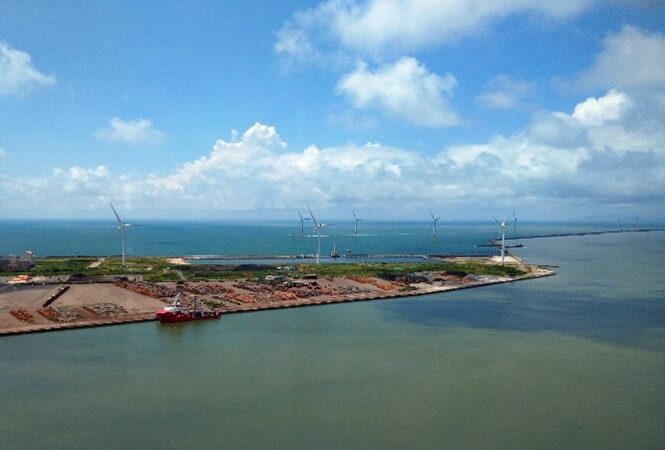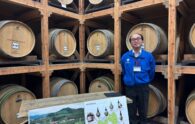I’m writing this article in mid-August, and the news is reporting on how Japan is experiencing many days where temps reach over 30 degrees Celsius. In Aomori Prefecture, where I live, we saw a record high of 39 degrees – the highest temperature ever recorded here. They say the Tohoku region of Japan is located in a subarctic zone, but with these temps, its feels like we’re in the tropics! What is happening to this planet?
It could be that decarbonization becomes a hail-mary solution to global. In my last article for the KTIMES, I wrote a bit about these renewable energy projects, and at last, the Japanese national government is about to play their trump card – offshore wind farms! (Do you remember? For those who want another look, here’s a link to my previous article:
https://www.iwate-ilc.jp/eng/ktimes/renewable-energy-and-science-technology-projects/
Summary of my last article
So many countries have implemented offshore wind power generation – the UK, Denmark, Holland, Germany, Belgium, Sweden… Compared to onshore wind farms, the wind conditions are better, there are no land-use restrictions, and there aren’t as many issues with scenery obstruction and noise. There are many merits to their use, but there is also a high cost involved with creating these farms on the ocean. You need cables running on the ocean floor, and the tides tend to wear down the equipment.
But if there’s one place in Japan that is gaining attention for its off-shore wind generation, it’s the ILC Candidate site in Kitakami!! …Or rather, a place near it. In December 2022, the first commercial off-shore wind farm in Japan started in Akita Prefecture, west of the ILC candidate site in the Kitakami mountains in Iwate. The Sea of Japan side of Tohoku is known for not only their offshore wind efforts, but also their wind power, hydropower, geothermal power, solar power, and other forms of renewable energy.
I traveled to Akita’s Offshore Wind Farm!
And so, I actually travelled to Akita City, Akita Prefecture to see the farm. There are 33 wind turbines in the area, each around 150m tall, generating 140,000 KW of power (enough for around 130,000 homes).
The national government has a plan to install offshore wind farms around the country to generate around 45 million KW (around 10 nuclear plants worth) of energy by 2040.
And this is not just for coastal regions. The government working quite quickly, broadening their plan to wider ocean regions, and preparing new laws to set up special zones for these wind farms. This very first wind farm is being pushed forth in Akita. We may be laggards on the world stage, but in Japan, we in Tohoku are innovators at the cutting edge!
The challenge for the time being? Creating turbine parts in Japan
Foreign countries, especially in Europe, have been accumulating wind turbine technology for thirty years, but in Japan we’ve just started. A wind turbine’s bracing support pillar is around 65m tall. A single wind blade is huge, around 60m. For this particular wind farm, they’ve procured the parts from a European company and shipped them over by boat.
But after the pandemic, the world has started to rethink its global supply chain. It would be much more stable if we could procure parts for the wind turbine right in the same region, wouldn’t it? In Akita, companies have improved their technical capabilities by developing airplane parts, and are now challenging themselves to create parts for the offshore wind farm. We want to support the companies that rise to the challenge like this.
The real challenge: getting love from the locals
There are a lot of hurdles to clear – issues with the fishing industry, problems with scenery obstruction – but most of all, I think we need the people in the local area to love these wind farms. There will be more people coming by to see the farm – people who come to study, people who come for work. Eventually, it should be cherished by everyone. I hope that the Akita offshore wind farm becomes that kind of place by 2040, when the national government’s goal should be achieved.

Scenery seen from Akita Port. These wind turbines blend in with the normal scenery.
Japanese
日本初の洋上風力発電、北上サイトの隣・秋田でスタート私がこの記事を書いているのは8月半ば。ニュースでは連日“真夏日”が報道されています。私が住んでいる青森県では、ついに史上最高の39℃を記録しました。日本の東北って、冷帯(subarctic zone)に属するんですが、これじゃあ熱帯(tropical zone)です。一体、地球はどうなっちゃうんだろう?
さて、地球温暖化の切り札、脱炭素。前回は、日本政府が脱炭素の“切り札”としている洋上風力発電が、そろそろ始まるよ!とお伝えしましたよね(覚えてる?)。今回は、それを見てきたよ!の報告です。ちなみに、前回を見逃した方はこちらから!
https://www.iwate-ilc.jp/eng/ktimes/renewable-energy-and-science-technology-projects/
前回のおさらい
洋上風力発電、イギリス、デンマーク、オランダ、ドイツ、ベルギー、スウェーデン…諸外国では導入が進んでいるそうですね。陸上よりも…風が良い、土地の制約がない、景観や騒音があまり問題にならない。色々メリットがあるようですが、海に造るコストもありそうです。海底ケーブルも必要ですし、潮風で劣化しそう。
洋上風力発電が日本で注目されている場所、それが北上サイト!…の近くです。2022年12月、日本初の商業運転は、北上サイトの西側、秋田県でスタートしました。
洋上風力発電に限らず、秋田県をはじめ東北の日本海側は、風力や水力、地熱、太陽光など、再生可能エネルギーの可能性が高い地域として、注目されています。
行ってみたよ!秋田の洋上風力発電
そこでやってきました、秋田県秋田市。この周辺に、高さ150mの大型風車があわせて33基設置され、14万KW(一般家庭13万世帯分)の発電能力があります。
日本政府は全国に洋上風力発電を設置して、2040年までに4,500万KW(原発10基分)にする計画なんです。
沿岸部だけでなく、より広い海域に広げたり、特別な区域を設ける法律を整備したり、急ピッチで準備を進めています。その第1号が、ここ、秋田で進められているんです。世界的に見ると、「ラガート(laggards)」かもしれませんが、日本ではまだまだ「イノベーター(innovators)」です(イノベーター理論(Innovation theory)。
当面の課題は日本で部品を作ること
海外ではヨーロッパ中心に30年前から技術の蓄積がありますが、日本は今始まったばかり。例えば、支柱となるタワーの高さは65m。風車の羽根は1枚が60mと巨大です。こうした部品は今回、ヨーロッパの会社から調達され、船で運ばれてきました...
コロナ禍を経験して、グローバル・サプライチェーンが見直されていますよね。風車の近くで部品を調達できる方が、何かあったときに安心です。例えば、航空機部品の開発で技術力を高めてきた秋田県内の企業が、洋上風力発電の部品作りにチャレンジしています。こういう企業のチャレンジを、私たちも応援していきたいですね。
本当の課題は地元に愛されること
漁業の問題、景観の問題、色々クリアすべきことはありますが、一番大切なのはそこに住んでいる人たちに愛されることだと、私は思います。「どれどれ?」と見に来る人が増える、洋上風力発電を学校教育で学ぶ、仕事で関わる人が増える。そして、皆に愛される。2040年の政府目標が達成される頃には、洋上風力発電がそんな存在になっていればいいなと思います。
<<写真>>
秋田港から見える景色。風車が日常に溶け込みつつあります。



